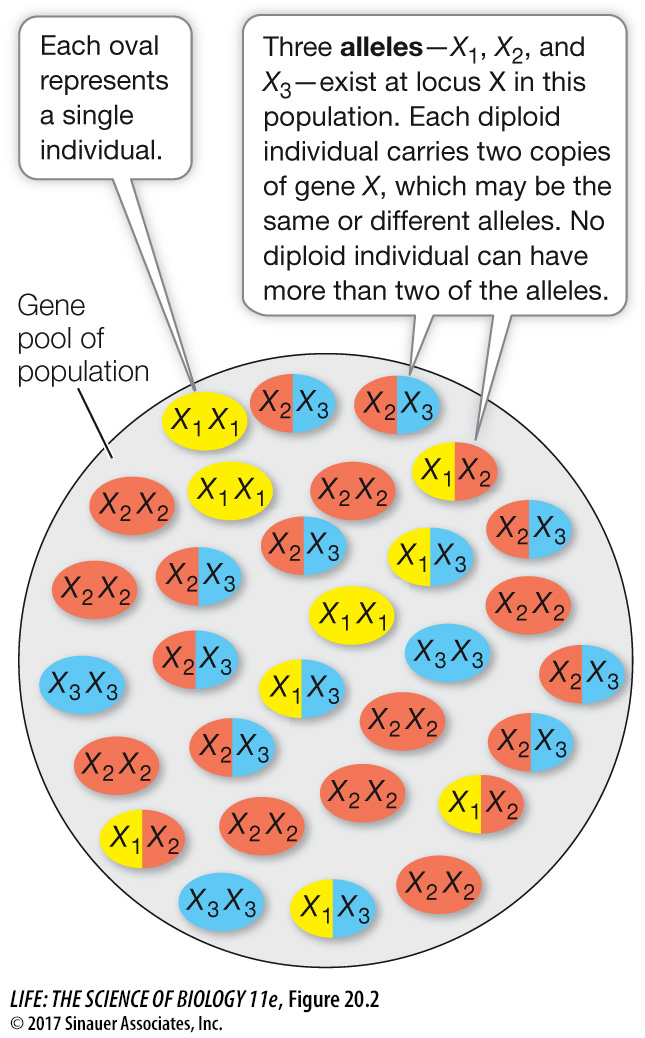Mutation generates genetic variation
The origin of genetic variation is mutation. As described in Key Concept 15.1, a mutation is any change in the nucleotide sequences of an organism’s DNA. The process of DNA replication is not perfect, and some changes appear almost every time a genome is replicated. Mutations occur randomly with respect to an organism’s needs; it is natural selection acting on this random variation that results in adaptation. Most mutations are either harmful to their bearers (deleterious mutations) or have no effect (neutral mutations). But a few mutations are beneficial, and even previously deleterious or neutral alleles may become advantageous if environmental conditions change. In addition, mutation can restore genetic variation that other evolutionary processes have removed. Thus mutation both creates and helps maintain genetic variation in populations.
428
Mutation rates can be high, especially in viruses and bacteria, which explains the rapid evolution of many pathogens. But in many protein-
As a result of mutation, different forms of a gene, known as alleles, may exist at a particular chromosomal locus (see Key Concept 12.1). At any particular locus, a single diploid individual has no more than two of the alleles found in the population to which it belongs. The sum of all copies of all alleles at all loci found in a population constitutes that population’s gene pool (Figure 20.2). (We can also refer to the gene pool for a particular chromosomal locus or loci.) The gene pool is the sum of the genetic variation in the population. The proportion of each allele in the gene pool is the *allele frequency. Likewise, the proportion of each genotype among individuals in the population is the genotype frequency.

A simple experiment demonstrates how mutations accumulate in populations in a continuous, almost constant fashion over time (Figure 20.3). Lines of the bacterium E. coli were grown in the laboratory for 20,000 generations, and the genomes were sequenced from individuals in the experimental lines at least once every 5,000 generations. Over the experiment, the lines accumulated about 45 changes to their genomes, and these changes appeared at a fairly constant rate over time. All living organisms experience a similar accumulation of mutations over time (although the rate of change differs among species), and these changes provide the raw material for evolution.

*connect the concepts As discussed in Key Concept 12.1, alleles of different genes assort independently in meiosis. The frequencies with which different allele combinations will be expressed in offspring can be calculated using a Punnett square or probability theory.